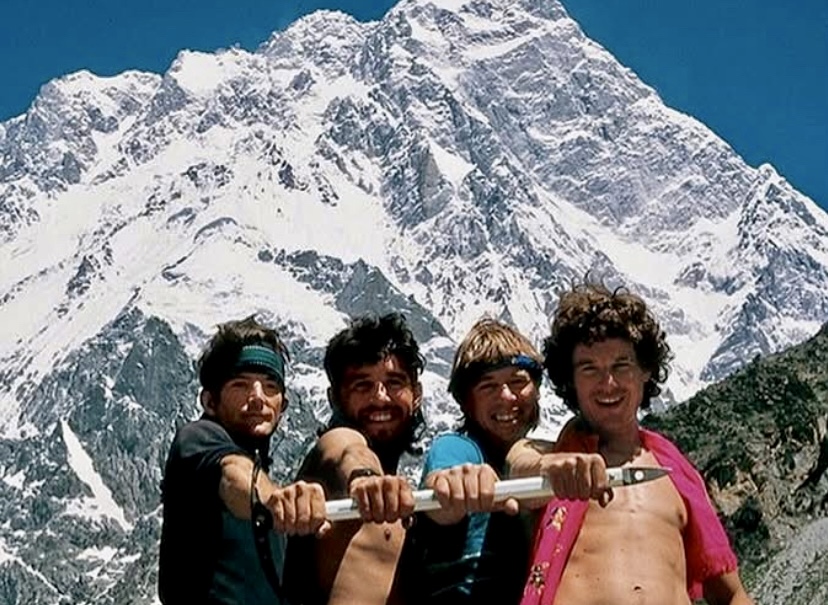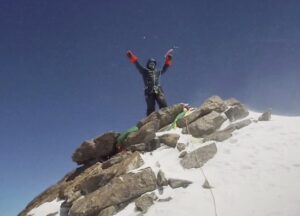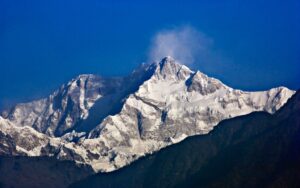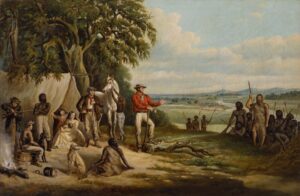The ninth-largest mountain in the world, Pakistan’s 8,125m Nanga Parbat has three main faces: the south-facing Rupal Face, the northeast-facing Rakhiot Face, and the northwest-facing Diamir Face.
On June 24, David Goettler, Tiphaine Duperier, and Boris Langenstein summited via the Schell Route after an 18-hour, alpine-style push from Camp 3 at 6,800m. From the summit, Duperier and Langenstein made the mountain’s first complete ski descent, including the entire Rupal Face, according to Montagnes Magazine. Goettler paraglided from 7,700m to Base Camp.
This article will explore the climbing history of the Rupal Face.
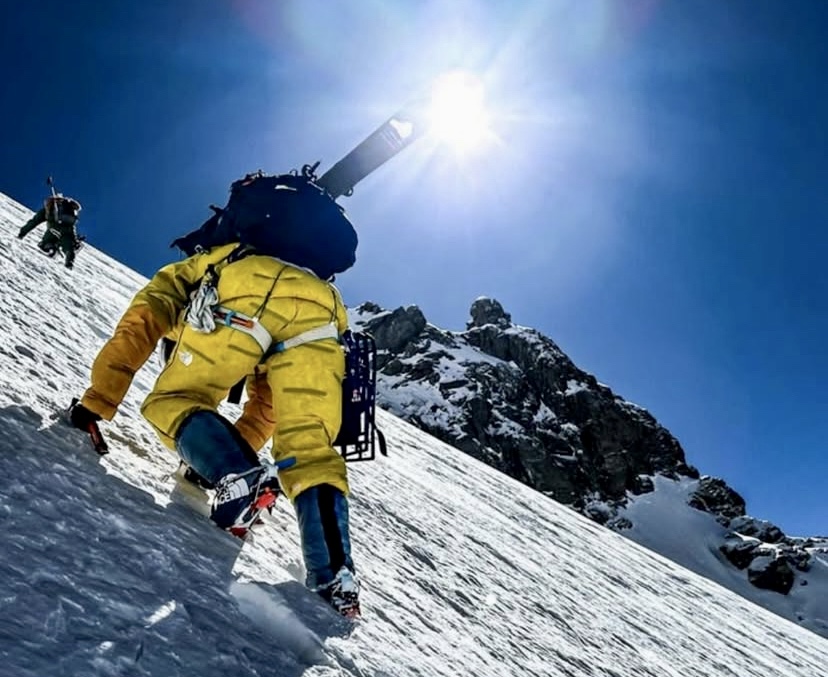
Duperier, Goettler, and Langenstein climb the Rupal Face toward the summit. Photo: David Goettler
The tallest mountain face
Many consider Nanga Parbat’s 4,600m Rupal Face the world’s tallest mountain face because it forms a continuous, steep wall from the Rupal Valley at 3,500m to the summit at 8,125m. Its steep icefields, rocky buttresses, avalanche-prone slopes, and brutal weather make it a formidable challenge.
By contrast, 7,782m Namcha Barwa’s south face (5,282m to 5,782m high) and 7,294m Gyala Peri’s south face (4,794m to 5,294m high) both have greater total relief but include gentler, less consistent slopes, reducing their status as unbroken climbing faces.
The Rupal Face has had just 12 successful ascents across four routes.

The Rupal Face. Photo: Simone Moro
The Messner Route: The first ascent
In 1970, Reinhold Messner and his brother Gunther climbed Nanga Parbat via the Rupal Face. They climbed up the South-Southeast Spur (often referred to as the Messner Route). The expedition was led by Karl Maria Herrligkoffer, and the Messner brothers reached the summit on June 27.
Because of worsening weather, exhaustion, and Gunther’s altitude sickness, the Messner brothers were unable to descend the Rupal Face. Instead, they made the first traverse of Nanga Parbat by descending the Diamir Face, following a route along the Mummery Rib’s lower slopes and improvising a westward path toward the Mazeno Ridge’s lower slopes, crossing gullies and snowfields near the Diamir Glacier.
Tragically, Gunther Messner died during this descent, likely in an avalanche on the Diamir Face.

Gunther Messner, left, and Reinhold Messner at Nanga Parbat in 1970. Photo: Reinhold Messner
Messner’s route repeated
In 2005, a South Korean team started from Base Camp on April 20 in heavy snow. They set up Camp 1 at 5,280m and Camp 2 at 6,090m along the 1970 Messner Route.
They were still on the mountain in early June when bad weather hit them hard and destroyed their tents. Despite this, they made Camp 3 at 6,850m before an injury stopped their first summit attempt.
On July 13, Kim Chang-ho and Lee Hyun-jo left Camp 4 at 7,125m. After 24 hours, dodging falling rock and ice, they summited late on July 14. The climbers went down the Diamir Face, survived an avalanche, and reached Base Camp after 68 hours. On the summit, they found a container left by Reinhold Messner and returned it to him as proof of their climb.
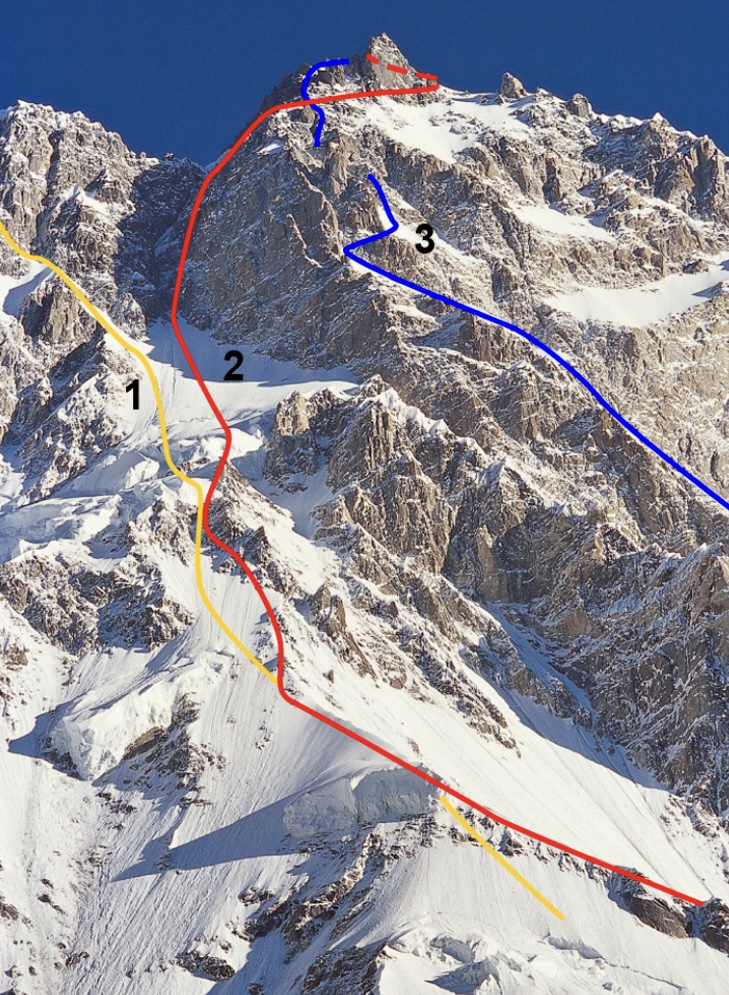
The upper section of the Rupal Face. (1) Holecek-Petrecek attempt in 2018; (2) South-Southeast Spur, aka Messner Route, 1970; (3) Central Pillar, Anderson-House Route of 2005. The far right skyline is the top section of the 1985 Mexican-Polish Route. Photo: Lee Young-Jun Collection via the American Alpine Journal
An alpine-style attempt on the Messner Route
A notable attempt of the 1970 Messner Route came in 1988. Canadians Kevin Doyle, Ward Robinson, and Barry Blanchard, plus American Marc Twight, prepared by climbing nearby peaks.
Doyle, Robinson, and Blanchard tackled a new route on 6,500m Shigeri’s north face, spending two unplanned nights at altitude. Twight soloed a new route on Laila’s south face and east ridge (6,000m). The three of them reached 7,000m on the easier Schell Route.
On July 9, the team started on the Rupal Face by the Messner Route. They left with light gear: five days’ food, eight days’ fuel, two ropes, and some climbing equipment.
The first 1,000m were easy, but after camping below Wieland Rocks, the terrain got steep and hard, needing two ice tools. At 6,400m, they avoided a rockfall-prone gully, climbing tough mixed ground. In two and a half days, they gained 3,170m, resting for half a day on July 12.
They climbed a steep ice barrier and struggled through deep snow. At 7,300m, they faced hard, brittle ice in the Merkl Gully. By July 13, they reached 7,700m, close to the summit.
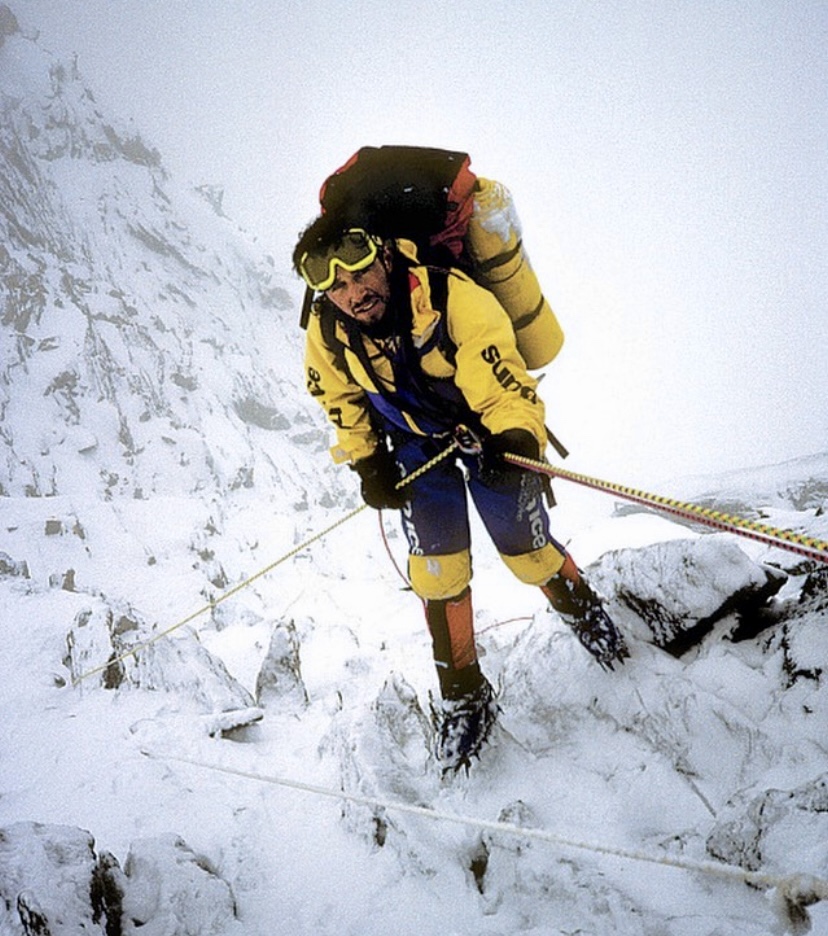
Barry Blanchard rappels down the Rupal Face after an avalanche. Photo: Mark Twight
A close call
Here, their luck ran out. A sudden storm hit, with lightning, 160kmph winds, and avalanches. Robinson, sick and hypothermic, could barely move. An avalanche nearly swept them off the mountain while rappeling, but their one ice screw held. After five hours, they reached the Merkl Icefield and found shelter for Robinson.
Twight and Blanchard descended to 7,000m, losing a tent and both ropes. At 6,700m, they found a discarded pack from the 1984 Japanese team with ropes and gear. Their find helped them escape the mountain over the next day and a half.
“The atmosphere quivered, and I could hear the tension of the storm’s electrical charge — white noise crackling in my ears,” Blanchard wrote in his book The Calling. “The midday sky was as dark as dusk…The avalanche had ended 27 minutes after it had begun. Ward’s face looked old. Deep lines dragged down the corners of his mouth; I had never seen those lines in his face before. His eyes had the improperly focused look of shock, with too much black in his pupils.”
On July 25, they tried again, climbing to 7,300m in just over two days. Sick again, Robinson retreated from 7,000m. Soon after, clouds and a brewing storm stopped the rest of the team, and they descended in 13 hours.
Importance of the 1988 attempt
This expedition was significant for several reasons. First, it highlighted the extreme challenge of the Messner Route, reinforcing its reputation as one of mountaineering’s toughest objectives. No team had summited via this route since 1970, and the 1988 attempt underscored why: the combination of technical ice climbing, unpredictable weather, and constant rockfall and avalanche risks demands exceptional skill and luck.
The team’s alpine-style approach — carrying minimal gear to move quickly — tested the limits of the strategy, showing both its potential and its vulnerabilities when equipment was lost. Their survival, especially after the storm and Robinson’s altitude sickness, demonstrated remarkable resilience and decision-making under pressure. Finding the Japanese pack was a stroke of luck that likely saved their lives.
Though they didn’t reach the summit, their 7,700m high point and detailed account provided valuable insights into this formidable route.
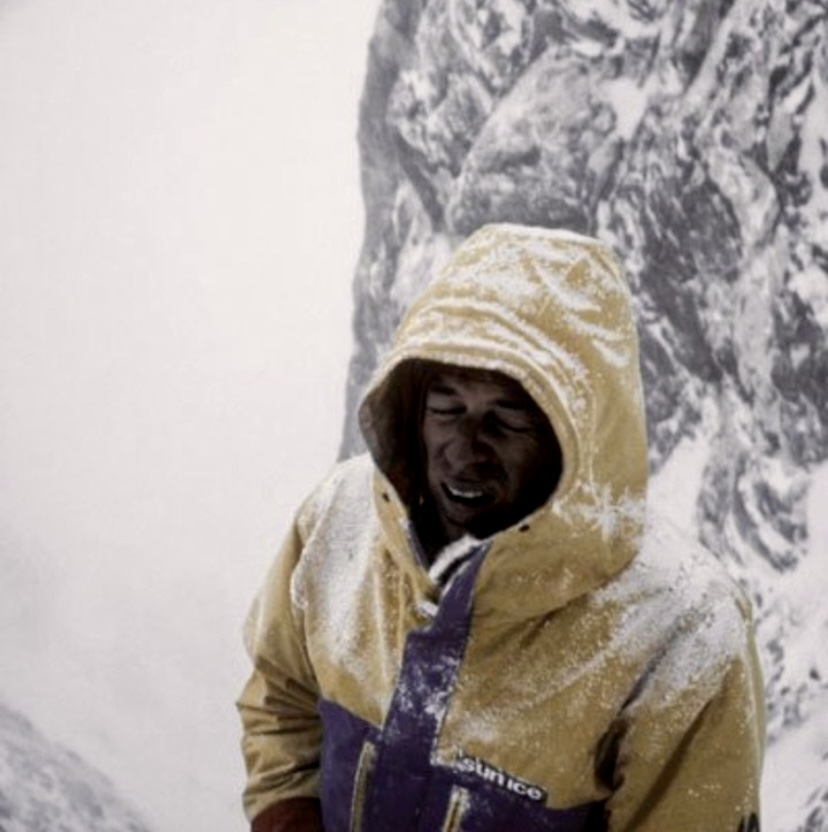
Ward Robinson, high on the Rupal Face. Photo: theboldandcold/ Instagram
The Schell Route
The Schell Route has eight successful ascents.
We previously detailed the first ascent of the Schell Route, climbed in 1976 by Austrians Hanns Schell, Robert Schauer, Siegfried Gimpel, and Hilmar Sturm. David Goettler, Tiphaine Duperier, and Boris Langenstein repeated this long, difficult route a few days ago.
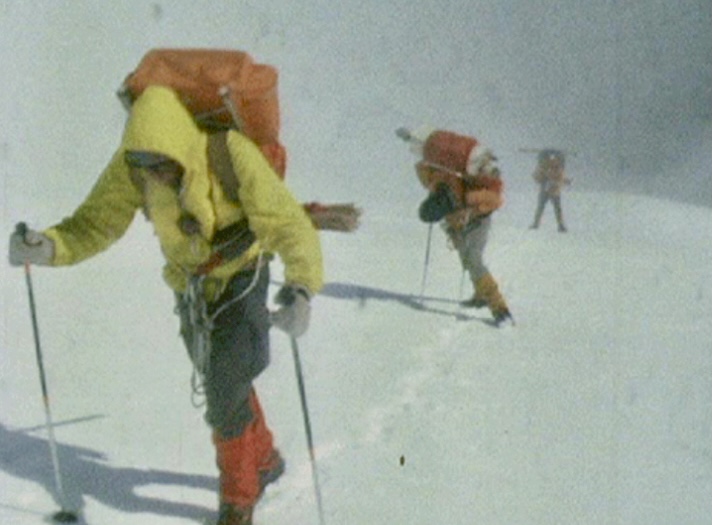
The 1976 Austrian team ascended by a new route in 1976. Photo: Steiermark.orf.at
With only eight successful climbs, the importance of this latest ascent is obvious. The other ascents are: 1981 by Ronald Naar; 1984 by Oscar Cadiach and Jordi Magrina; 1990 by Marija Frantar and Joze Rozman; 1990 by Reinmar Joswig and Peter Mezger; 1990 by Osamu Nakajima; 2013 by Zsolt Torok, Teofil Vlad Dima, Aurel Salasan, and Marius Gane.
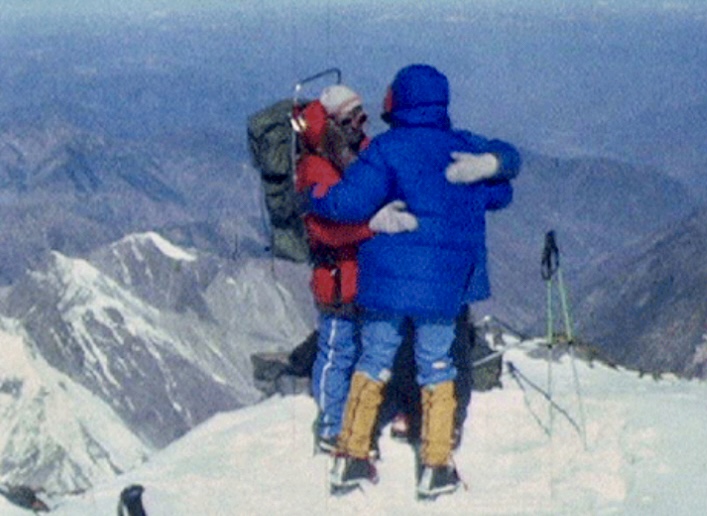
Two members of the Austrian team on the summit of Nanga Parbat in 1976, via the Schell Route. Photo: Steiermark.orf.at
The 2025 ascent via the Schell Route comes 12 years since its last ascent in 2013, and Duperier becomes just the second woman to achieve this remarkable feat. Goettler had attempted this route four times previously.
The Southeast Pillar: The Polish-Mexican Route
In 1982, Swiss climber Ueli Buhler nearly conquered the Southeast Pillar. He reached the 8,042m south summit but was unable to continue to the main peak.
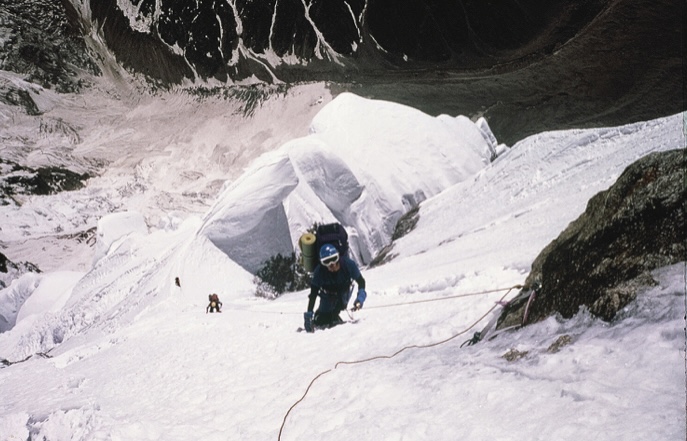
The 1985 Polish-Mexican team ascends the Rupal Face via a new route. Photo: Krakowairport.pl
In 1985, a Polish-Mexican expedition opened a new route on the Rupal Face by the Southeast Pillar.
This 1985 expedition, led by Pawel Mularz, tackled the dangerous pillar in brutal weather. During the climb, Andrzej Samolewicz survived a 600m fall with only minor injuries, but an avalanche killed Piotr Kalmus while he descended from Camp 2 to Camp 1. On July 13, Jerzy Kukuczka, Zygmunt Andrzej Heinrich, Carlos Carsolio, and Slavomir Lobodzinski reached the summit from Camp 5, marking Kukuczka’s ninth 8,000m peak.
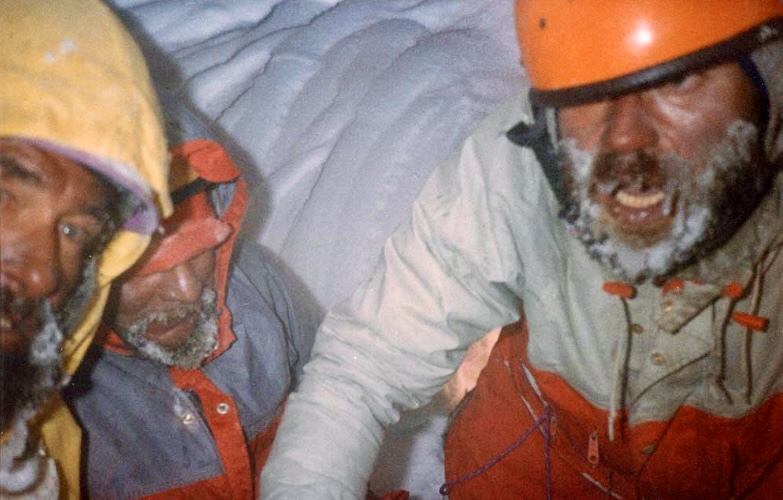
From left to right: Andrzej Zyga Heinrich, Jerzy Kukuczka, and Slawomir Lobodzinski during an improvised bivouac in a snow cave. The team was descending from Camp 5 on the Rupal Face. Photo: Jerzykukuczka.com
A winter solo attempt ends in tragedy
In the winter of 2012-13, Joel Wischnewski, a little-known mountaineer from France, attempted a highly ambitious solo climb of the Southeast Pillar on Nanga Parbat’s Rupal Face.
He left France at the end of December 2012, reached base camp on January 9, 2013, and made his last journal entry on February 6 from Camp 2, indicating he was moving up the Southeast Pillar.
When he didn’t return, his agent in Pakistan launched a search. Three experienced Pakistani mountaineers climbed up the lower part of his proposed route, but found no trace of the Frenchman.
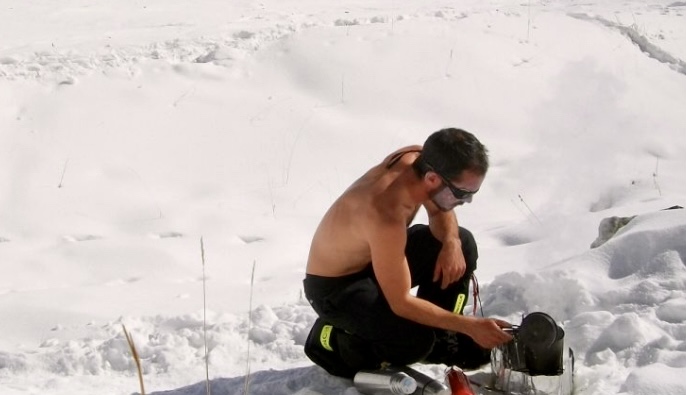
Joel Wischnewski at Base Camp on Nanga Parbat. Photo: Joel Wischnewski
Wischnewski’s body was found on Oct. 10, 2013, at approximately 6,100m on the Rupal Face near the foot of an icefall. Local villagers spotted his boots after the summer snowmelt in early September and notified the French embassy.
A team led by Brigadier Akram Khan recovered the body, and it was buried at the Herrligkoffer climbers’ cemetery near Base Camp. Wischnewski likely died in an avalanche.
The Central Pillar: The Anderson-House Route
Vince Anderson and Steve House climbed the Rupal Face by a 4,100m new route (M5, 5.9, WI4) in the autumn of 2005.
The duo’s route up the Central Pillar was alpine-style and faced tough challenges, like loose rock on a hard 5.9 section. On day three, they reached a hanging glacier, then followed an icy ramp to their last camp at 7,400m. There, they joined the Messner Route at 7,900m and summited on September 6. Anderson and House descended by the Messner Route.
The 2005 Central Pillar route, distinct from the 1970 Messner Route and the 1985 Southeast Pillar, was a significant achievement and earned them the 2006 Piolet d’Or. Their climb followed a 2004 attempt by House and Bruce Miller, which reached 7,500m but was halted by altitude sickness.
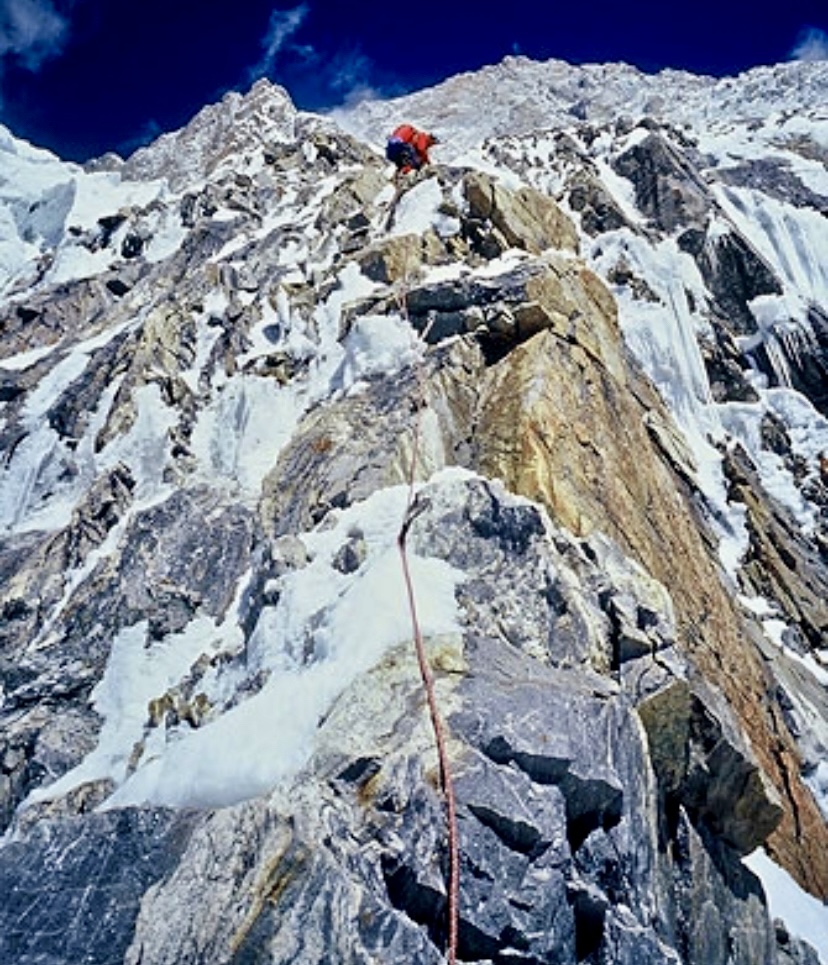
Anderson and House on the Rupal Face. Photo: Planet Mountain
A central route attempt
In 2005, Slovenian Tomaz Humar attempted a challenging new central route up the Rupal Face. He had previously tried a similar route in 2003 but retreated because of poor weather and health issues.
On this second attempt, Humar reached about 6,300m before bad weather trapped him, forcing him to dig into the snowy slope and wait for clearer skies and fewer avalanches. However, after days of waiting, he required a risky helicopter rescue by Pakistani pilots.
Climbing journalists and peers criticized him, but Slovenians watched the drama unfold on TV and celebrated Humar’s safe return as a national hero. Four years later, Humar died on Langtang Lirung.
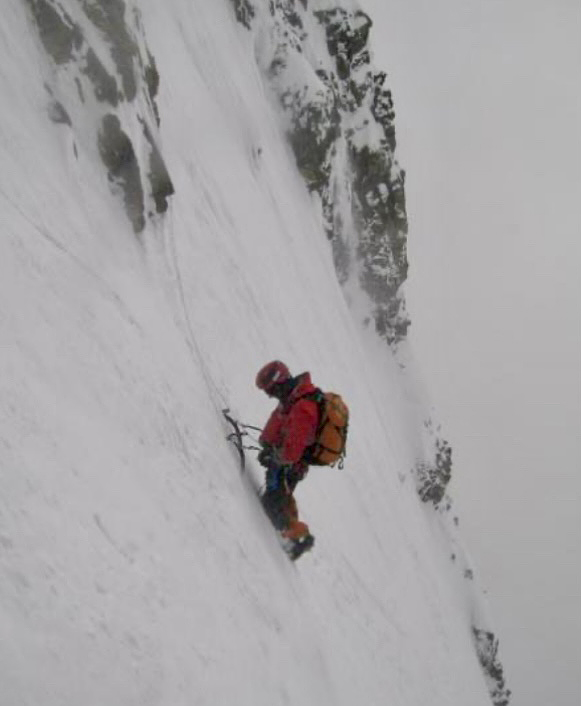
Tomaz Humar on the Rupal Face while attempting a new route solo in 2005. Photo: Tomaz Humar
Another new route attempt
In 2018, Czech climbers Marek Holecek and Tomas Petrecek attempted a new alpine-style route on the Rupal Face.
Initially, they planned to establish a new line to the right of the 2005 Anderson-House route on the Central Pillar. However, bad weather and heavy snowfall forced them to adjust their plans. When a weather window opened, they shifted to a line closer to the 1970 Messner Route, following it until the Merkl Rinne, a steep gully used by the Messner brothers. From there, they deviated, climbing a new variation through rocky buttresses to the left of the gully, seeking a natural line of weaknesses.
After six days on the face, they reached approximately 7,800m on September 2. There, they were forced to retreat in increasingly strong winds (up to 100kmph). They were about 300m below the summit when they turned back.
They descended the Rupal Face, which Holecek described as extremely challenging, comparing it to a “cabriolet [horse-drawn carriage] trip without a windscreen in an ice storm.”
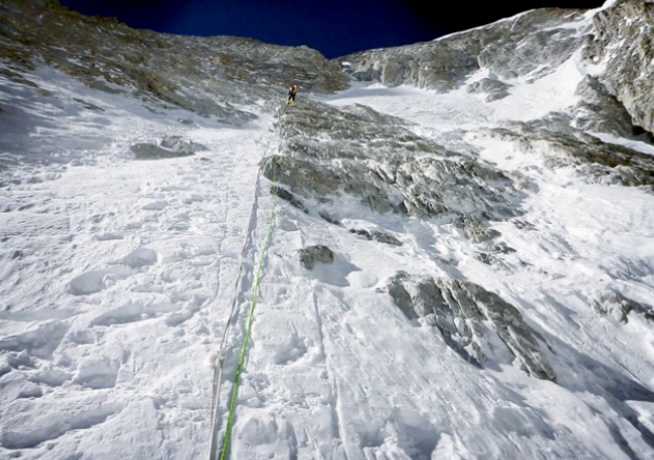
Holecek and Petrecek during their 2018 attempt. Photo: Tomas Petrecek
Winter attempts
Since 1988, nine winter attempts have targeted the Rupal Face, but all were defeated by the extreme conditions.
Maciej Berbeka of Poland led three attempts. In 1988-89, his team reached 6,500–6,800m on the Messner Route before switching faces in harsh weather. In 1990-91, a Polish-English team reached 6,600m on the Schell Route, and in 1991-92, they reached 7,000m. Both times, severe weather stopped them.
Krzysztof Wielicki’s 2006-07 Polish expedition reached 6,800m on the Schell Route but retreated in fierce winds. As we previously noted, Joel Wischnewski vanished during his winter solo attempt in 2013. Tomasz Mackiewicz’s winter attempts on the Schell Route included a 2012-13 solo climb to 7,400m, and a joint effort with David Goettler to 7,200m in 2013-14.
In the winter of 2014-15, Russians Nikolay Totmjanin, Sergei Kondrashkin, Valery Shamalo, and Victor Koval reached 7,150m on the Schell Route before deteriorating weather, including high winds, snow blizzards, and zero visibility, forced them back.
Cleo Weidlich (a Brazilian-born American climber) and her Sherpa team abandoned their 2015-16 Schell Route attempt in treacherous conditions.
In 2021-22, Herve Barmasse and David Goettler stopped at 5,670m on the Schell Route because of avalanche risk and bad weather.
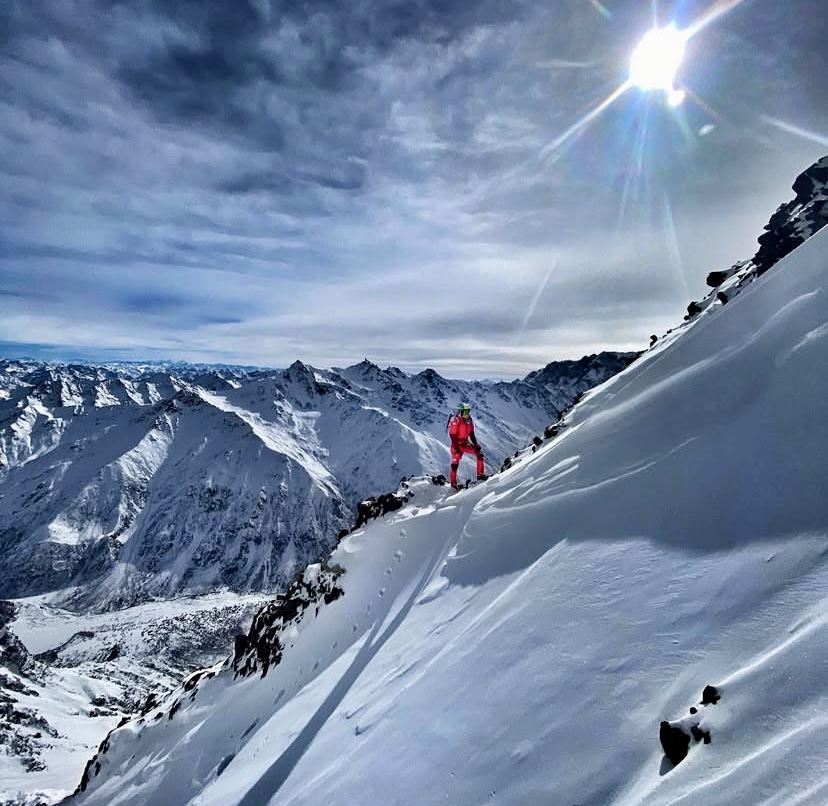
Herve Barmasse during the 2021-22 winter attempt on the Schell Route with David Goettler. Photo: David Goettler
The Schell Route remains unclimbed in winter
While Nanga Parbat was finally climbed in winter — on Feb. 26, 2016, via the Kinshofer Route on the Diamir Face by Simone Moro (Italy), Alex Txikon (Spain), and Ali Sadpara (Pakistan) — the ever-formidable Rupal Face remains unclimbed during the harshest season.
